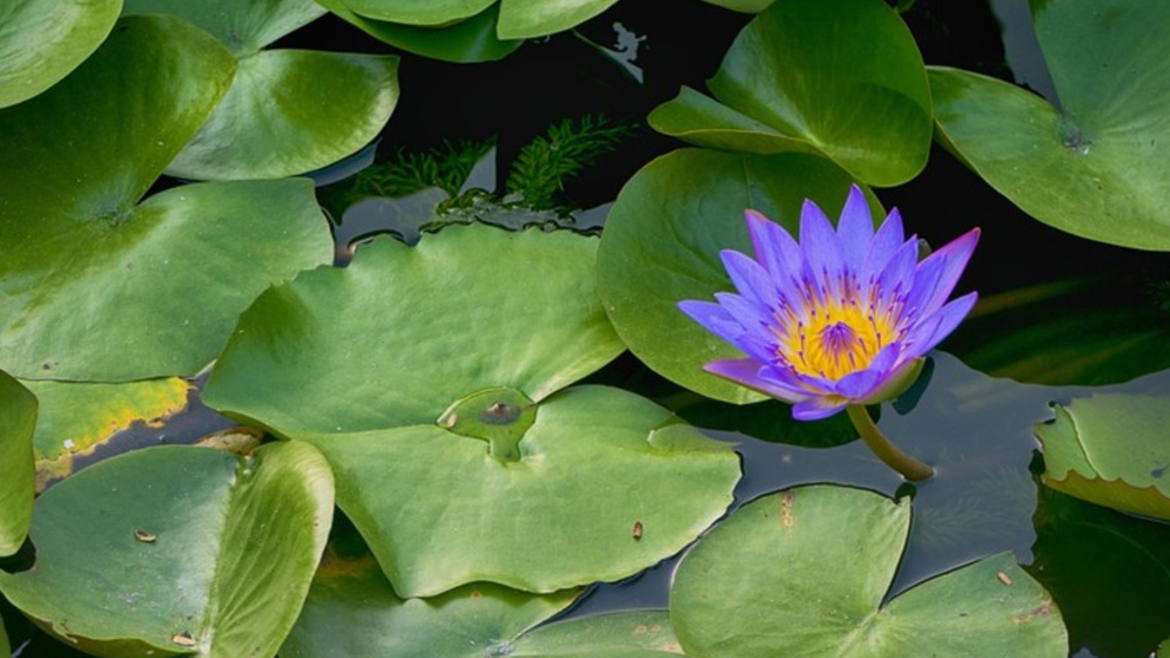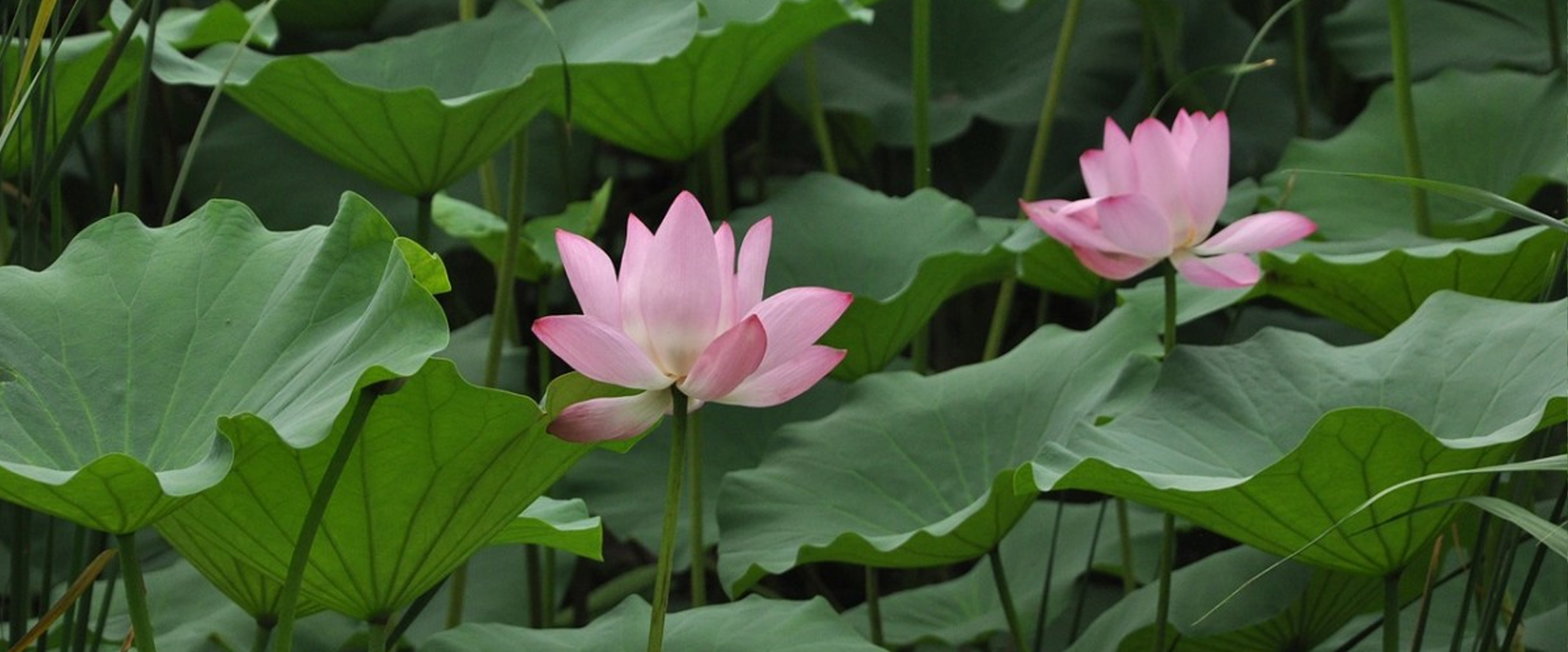(Podcast Episode)
Edible Pond Plants Adding Functionality to Beauty
When creating a vibrant and dynamic pond, the selection of plants plays a crucial role. Not only do pond plants enhance the aesthetic appeal of the water garden, but they can also serve a functional purpose.
Among the many options available, edible pond plants offer a unique combination of aesthetic and practicality.
Let’s delve deeper into how to choose the right plants for the pond, focusing on edible varieties that can transform the pond into a sustainable and productive oasis.

The Importance of Pond Plant Selection
Selecting the right plants for the pond is essential for maintaining a balanced ecosystem.
Pond plants contribute to water quality by absorbing excess nutrients, providing habitat for wildlife, and preventing algae blooms.
The right mix of plants can also ensure that the pond remains healthy and visually appealing throughout the year.
Benefits of Pond Plants
Water Quality Improvement: Plants like watercress and duck potato absorb excess nutrients from the water, preventing nutrient overload that can lead to algae blooms.
Oxygenation: Submerged plants give oxygen into the water during photosynthesis, which is crucial for maintaining a healthy environment for fish.
Habitat and Shelter: Plants provide habitat for aquatic life, including fish, frogs, and beneficial insects. They offer shelter and breeding grounds, supporting biodiversity.
Erosion Control: Marginal plants help stabilize the pond’s edges, reducing erosion and maintaining the pond’s shape and clarity.
Incorporating edible pond plants into the water garden is an excellent way to enhance functionality and beauty.
These plants not only thrive in aquatic environments but also provide a source of fresh, homegrown food.
Following are some of the best edible pond plants to consider:
Watercress
Watercress is a fast-growing aquatic plant that thrives in flowing water. Known for its peppery flavor, watercress is a nutrient-dense leafy green that can be harvested regularly.
It prefers cooler water temperatures and can be planted in shallow pond areas.
Cultivation Tips
Plant watercress in a container submerged in the pond to control its spread.
Ensure it receives partial shade to prevent wilting in hot weather.
Regularly harvest to encourage new growth and prevent it from becoming invasive.
Lotus
Lotus plants are stunning with their large, fragrant flowers, and their seeds and roots are also edible.
The seeds, often referred to as “makhana” or “fox nuts,” can be roasted or popped like popcorn, while the roots (lotus rhizomes) are used in various culinary dishes.
Cultivation Tips
Lotus requires a sunny location and at least 6 hours of sunlight daily.
Plant in a large container with heavy loam soil submerged in the pond.
Ensure water depth is at least 18 inches to accommodate the plant’s growth.
Water Chestnuts
Water chestnuts are widely used in cooking dishes originating from the East. They are characterized by crunchiness and delicate taste.
These plants grow well in shallow water and can be harvested in the fall. They require a muddy substrate to thrive.
Cultivation Tips
Plant in containers filled with clay soil and place in shallow water.
Ensure consistent water levels throughout the growing season.
Harvest water chestnuts in late summer or early fall when the stems begin to die back.
Duck Potato
Also known as “wapato” or “arrowhead,” duck potato is a versatile edible pond plant. The tubers of this plant are rich in carbohydrates and can be cooked similarly to potatoes.
Duck potato thrives in shallow water. Still water can also provide a habitat for aquatic wildlife.
Cultivation Tips
Plant tubers in containers with loamy soil and submerge in shallow water.
Position in full sun to partial shade.
Harvest tubers in late fall after the foliage dies back.
Water Spinach
Water spinach, also known as “kangkong” or “morning glory,” is a highly nutritious green that proliferates in water.
It prefers warm temperatures and can be harvested regularly for salads, stir-fries, and soups.
Cultivation Tips
Plant cuttings in shallow water with rich, loamy soil.
Ensure it receives plenty of sunlight and warm temperatures.
Regularly trim to prevent excessive spreading and encourage tender new growth.
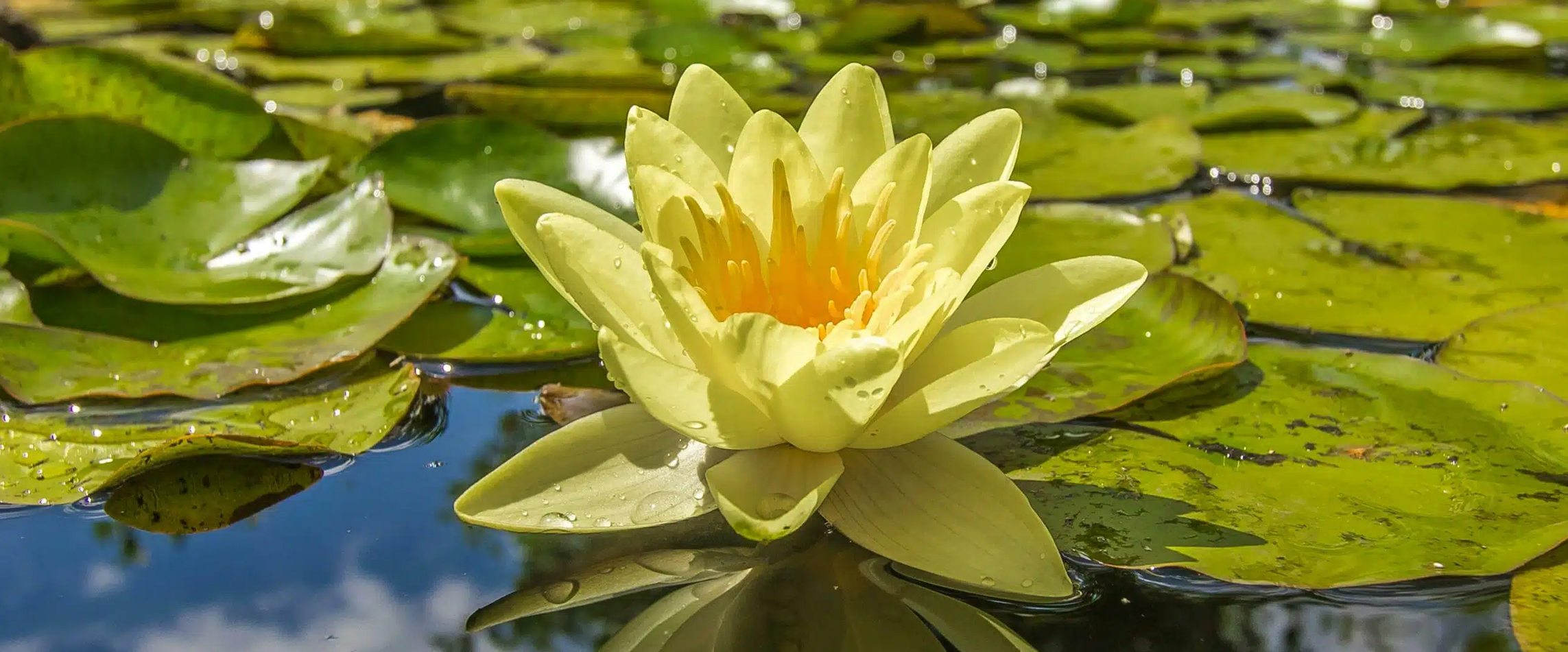
How to Choose the Right Plants for Your Pond
When selecting edible pond plants, consider the following factors to ensure a thriving and balanced pond ecosystem:
Climate and Water Conditions
Different plants have varying requirements for temperature, water depth, and flow.
One needs to select plants that are appropriate for the area’s climate and the conditions within the pond.
For instance, lotus plants require warm, sunny conditions, while watercress thrives in more relaxed, flowing water.
Growth Habits
Consider the plants’ growth habits to avoid overcrowding.
Some plants, like watercress and water spinach increase and may require pruning to prevent them from overtaking other plants.
Planning the pond layout and planting in containers can help manage aggressive growers.
Nutrient Needs
Edible pond plants can help manage nutrient levels in the pond by absorbing excess nutrients that would otherwise contribute to algae growth.
Balance high-nutrient absorbers with other plants to maintain water quality. Combining submerged, floating, and marginal plants ensures a balanced nutrient uptake.
Aesthetic Appeal
While functionality is essential, don’t overlook the aesthetic aspect. When deciding on plants, look for varieties that add texture, color, and height variance relative to the pond.
Combining flowering plants like lotus and water lilies with lush green edibles like watercress and duck potato can create a stunning visual effect.
Wildlife Benefits
Edible pond plants can also provide habitat and food for local wildlife. Consider the ecological benefits of the plants to support biodiversity in the pond.
Plants like duck potato, and lotus offer habitat and food sources for fish, amphibians, and insects, enhancing the overall health of the pond ecosystem.
Best Plants for Ponds A Combination of Edible and Ornamental
For a well-rounded pond, combine edible plants with ornamental varieties. This approach enhances the visual appeal and fosters a healthy ecosystem. Some great combinations include:
Lotus and Water Lilies: Both plants offer stunning flowers and can coexist peacefully. The lotus provides edible seeds and roots, and the water lilies add color and cover for fish.
Duck Potato and Pickerelweed: Duck potato provides edible tubers, while pickerelweed offers vibrant purple flowers that attract pollinators and provide habitat for wildlife.
Watercress and Blue Flag Iris: Watercress adds a peppery green to the diet, and the blue flag iris brings elegant blue flowers to the pond, creating a beautiful contrast.
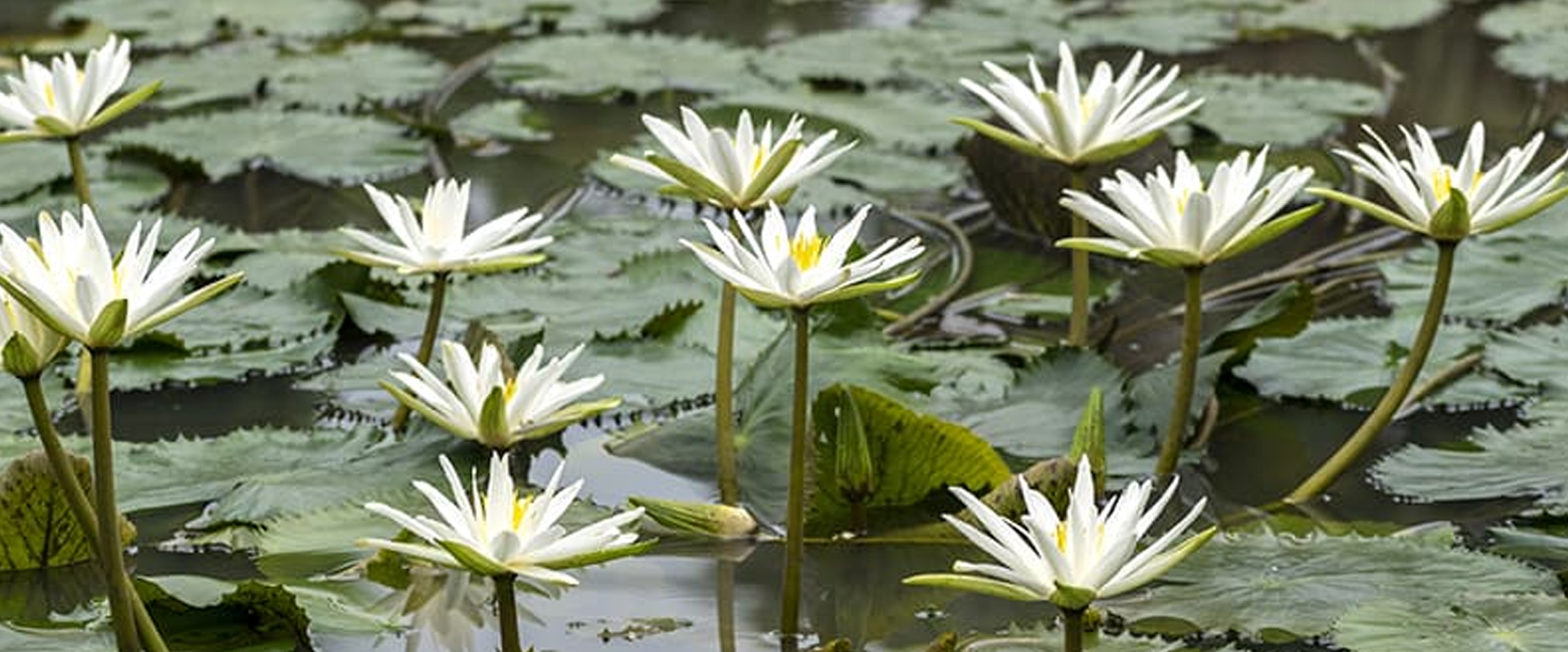
Maintenance Tips for Edible Pond Plants
To ensure the edible pond plants thrive and the pond remains healthy, follow these maintenance tips:
Regular Pruning: Trim plants regularly to prevent overcrowding and encourage healthy growth. This is especially important for fast-growing species like watercress and water spinach.
Nutrient Management: Monitor nutrient levels to prevent imbalances. While edible plants absorb excess nutrients, too many nutrients can still lead to algae problems. Consider adding beneficial bacteria or pond filters to help manage nutrient levels.
Water Quality Monitoring: Check the water quality parameters, like pH, dissolved oxygen, and temperature, to ensure they are within the optimal range for the plants and aquatic life.
Seasonal Care: Adjust pond plant care according to the season. For example, in colder climates, some tropical plants like taro may need to be brought indoors during the winter.
Pest Management: Monitor pond plant pests and diseases. Use organic or biological control methods to manage any issues, ensuring the health of the edible plants and the safety of the harvest.
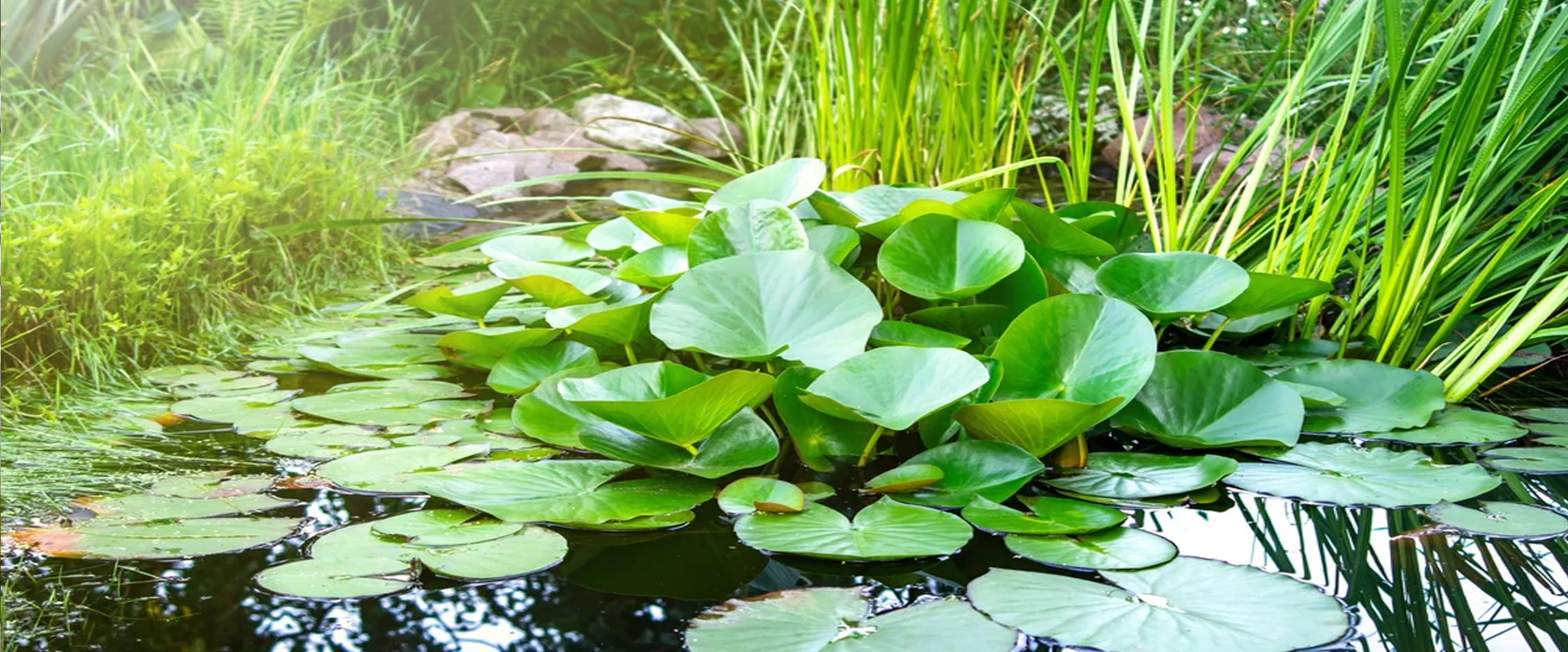
Creative Uses for Edible Pond Plants
Edible pond plants are not only great for their nutritional value and ecological benefits, but they also offer a variety of creative uses that can enhance culinary adventures and lifestyles.
Culinary Delights
Gourmet Salads and Stir-Fries: Incorporate watercress, water spinach, and young shoots of cattails into the salads and stir-fries. Their unique flavors can elevate the dishes to gourmet standards.
Lotus Root Chips: Slice lotus roots thinly, season them, and bake or fry them to make crispy lotus root chips. These make for a delicious and healthy snack.
Water Chestnut Desserts: Water chestnuts are used in traditional Asian desserts, such as sweet water chestnut pudding or refreshing fruit salad.
Herbal Remedies and Teas
Sweet Flag Tea: The rhizomes of sweet flag can be dried and used to make a soothing tea. It has been traditionally used for its calming effects and digestive benefits.
Calamus Root Extracts: Sweet flag rhizomes, with their aromatic and medicinal properties, can also be used to make extracts or infusions for herbal remedies.
Decorative Arrangements
Lotus Flower Arrangements: The flowers of the lotus plant are beautiful and can also be used in floral vases, adding a touch of beauty and calm to the house.
Aquatic Plant Displays: Create stunning aquatic plant displays in glass containers or aquariums, showcasing the beauty of plants like water lilies, lotus, and taro.
Wrapping it Up
Edible pond plants are a fantastic addition to any water garden, offering a unique blend of beauty and functionality.
By carefully selecting the right plants for the pond, one can create a sustainable and productive ecosystem that provides fresh, homegrown food while enhancing the natural beauty of the outdoor space.
Embrace the versatility of edible pond plants and enjoy the advantages they offer to the pond and the table. Happy gardening!

